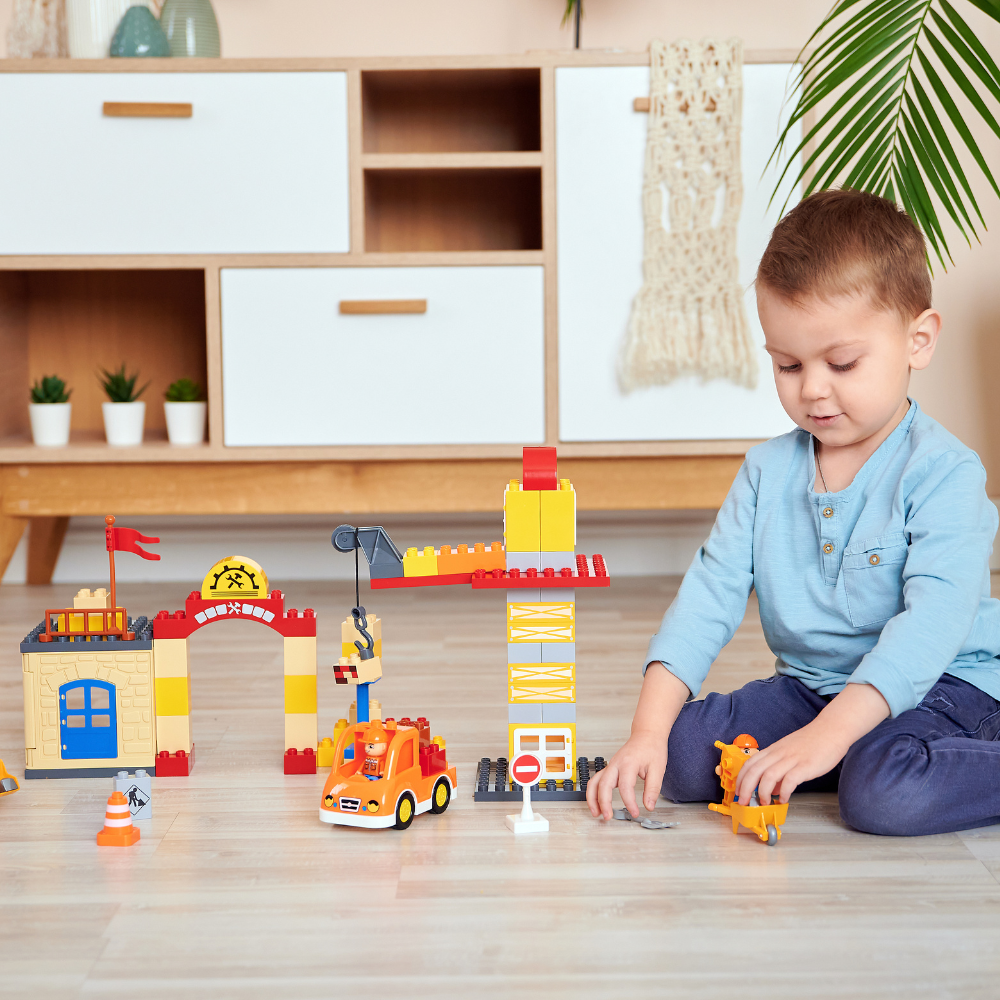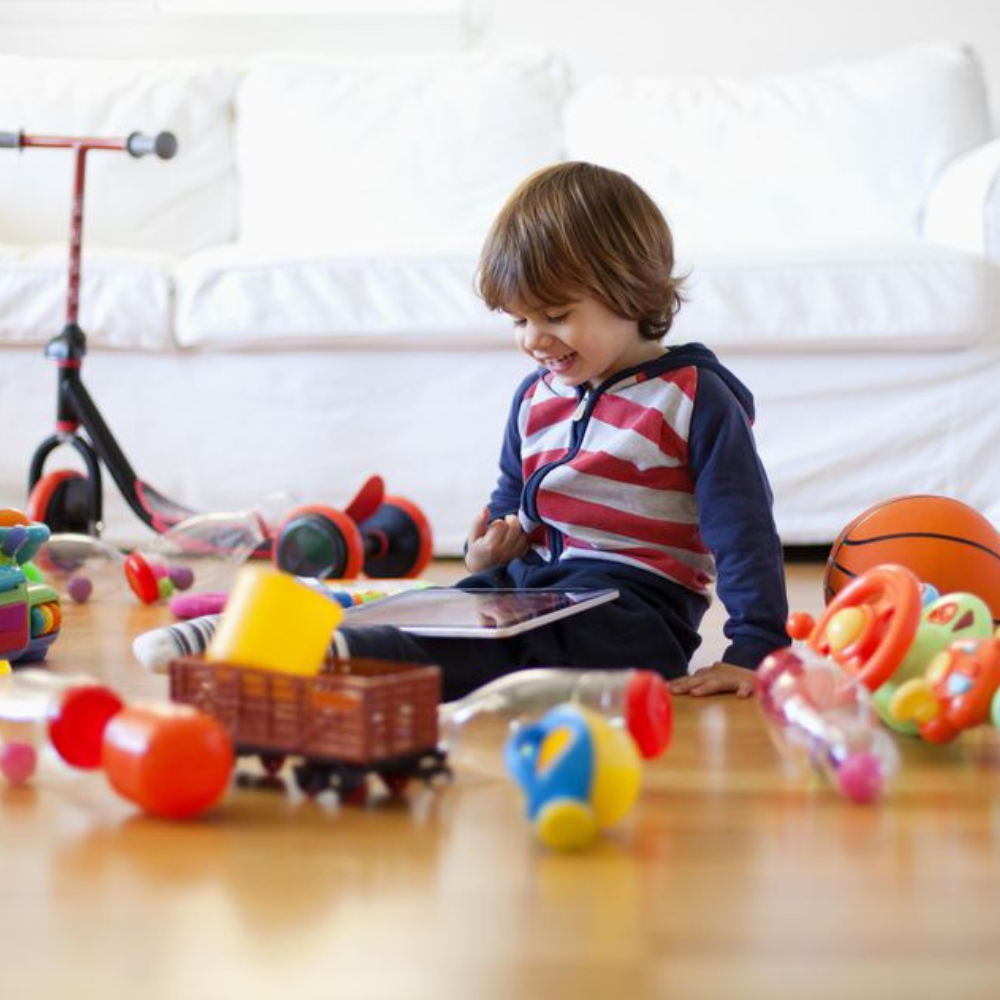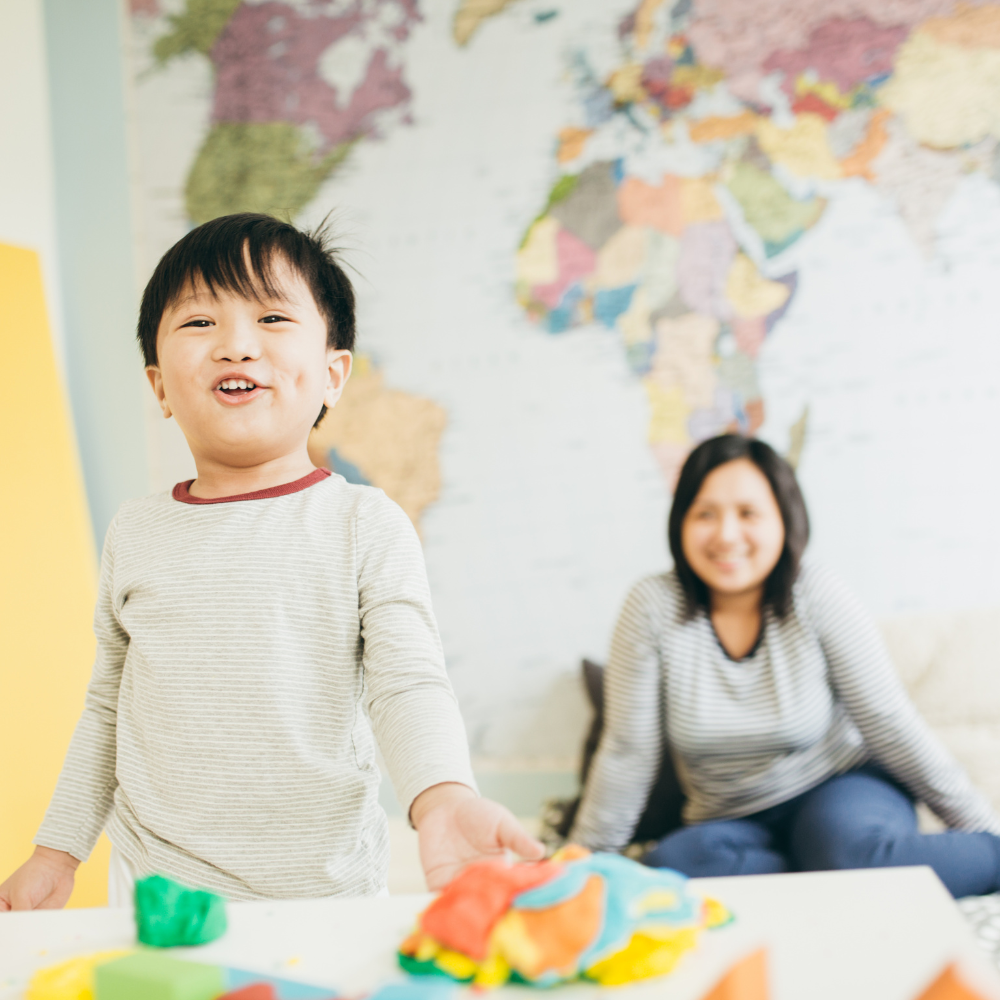As parents, we often wonder how many toys are enough for our children. We want them to have a fulfilling childhood with all the fun and excitement of playing with toys.
However, with so many options available in the market, it can be overwhelming to decide how many toys is too much or too little.
In this guide, we will explore the factors that determine how many toys a child should have and provide some tips on managing toy clutter.
We will also discuss the benefits of limiting the number of toys and how it can promote creativity and imagination in children. So, let's dive into this important topic and find the balance between too many and too few toys for our little ones.
Why Is The Number Of Toys Important?

The number of toys a child has can significantly impact their development and well-being. While it may seem harmless to spoil our children with an abundance of toys, it can actually be detrimental to their growth. Children who are bombarded with too many toys may feel overwhelmed, have difficulty focusing, and lack the ability to self-regulate.
On the other hand, children with fewer toys tend to develop better attention spans, creativity, and problem-solving skills. They learn to make the most out of what they have and engage in imaginative play.
Moreover, having too many toys can lead to clutter and disorganization in a child's space. This not only creates chaos for them but also adds stress for parents who are responsible for tidying up. In contrast, a tidy and organized play area with a limited number of toys can provide a sense of calm and promote better concentration.
Factors To Consider When Determining The Number Of Toys

There are various factors to consider when determining how many toys a child should have. These include:
Age and Developmental Stage
A child's age and developmental stage play a crucial role in determining the appropriate number of toys. Infants, for instance, are primarily focused on sensory exploration and may benefit from a few simple toys that encourage touch, sound, and movement.
As children grow into toddlers and preschoolers, their play becomes more complex, requiring toys that stimulate imagination and creativity, such as building blocks and pretend playsets. For older children, educational toys that challenge critical thinking and problem-solving become more relevant.
Parents should also consider developmental milestones—children who are developing fine motor skills might need toys that assist in practicing these abilities. Ultimately, aligning toy selection with developmental needs helps foster a nurturing environment where children can thrive and engage meaningfully in their play experiences.
Interests and Preferences
Children have unique interests and preferences, so it's crucial to consider these when determining the number of toys they should have. Observing what types of toys your child gravitates towards can help you make more informed decisions about which toys to keep and which ones to donate or rotate.
Also, involving children in the process of decluttering their toy collection can be beneficial. It allows them to have a say in what stays and what goes, creating a sense of ownership and responsibility for their belongings.
Plus, incorporating open-ended toys, such as blocks, playdough, and dress-up clothes, encourages children to use their imagination and creativity to transform these items into endless possibilities.
Parental Values and Budget
Every parent has different values and beliefs about what they want for their child's playtime. Some may prioritize educational or Montessori-style toys, while others may prefer open-ended and imaginative play options.
It's essential to consider these values when determining the number of toys a child should have. Additionally, budget constraints can also influence the number of toys a child owns. Instead of buying numerous cheap and low-quality toys, parents can invest in fewer but high-quality ones that will withstand years of play and promote more meaningful development.
Available Space for Storage and Play Area
As much as we love our children, it can be challenging to have a clutter-free and organized home, especially when it comes to their toys. Therefore, considering the available space for storage and play area is crucial when determining the number of toys a child should have.
It's recommended to designate specific areas for toy storage and play, such as shelves or bins for organization and a designated play mat or rug. This can help limit the number of toys that can be kept at any given time while still providing enough options for children to engage in different types of play.
So these are some of the factors to consider when determining the number of toys a child should have. Ultimately, it's essential to strike a balance and provide children with enough options for play while also promoting organization, creativity, and development.
How Many Toys Are Enough?
The exact number of toys that a child needs is not set in stone and may vary from family to family. However, as a general rule of thumb, experts recommend having around 5-10 toys per age group.
For example, a one-year-old might benefit from having five toys that promote sensory exploration and fine motor skills, such as rattles, soft blocks, and teething rings. As they grow into toddlers and preschoolers, the number can increase to around ten toys that encourage imaginative play, problem-solving, and physical activity.
Moreover, rotating toys every few weeks or months can also help keep children engaged with their toys while minimizing clutter. This approach allows for new discoveries and keeps children from becoming overwhelmed by too many options.
Remember, the focus should not be on having a specific number of toys but rather on providing children with a few high-quality and developmentally appropriate options that promote creativity, learning, and fun. With these factors in mind, parents can find a balance that works for their family and provides their child with an enriching play experience.
Types Of Toys That Promote Development

Toys are not just for entertainment; they can also play a crucial role in promoting various aspects of a child's development. Here are some types of toys that can stimulate different skills and abilities:
Sensory Toys
Sensory toys are designed to engage and stimulate a child's senses, including sight, sound, touch, and even smell. These toys can range from textured balls and squishy toys to light-up and music-making devices.
They play a significant role in helping children explore their environment while developing fine and gross motor skills. Sensory play encourages curiosity and creativity, allowing children to experiment with different textures and sounds.
It can also be particularly beneficial for children with sensory processing issues, as these toys can provide soothing experiences and help regulate their sensory needs.
Montessori Toys
Montessori toys are designed to promote hands-on learning and encourage independence, responsibility, and problem-solving skills. These toys often have simple designs and natural materials that allow children to focus on one skill at a time.
For example, nesting blocks, shape sorters, and puzzles can help develop fine motor skills and hand-eye coordination. While open-ended toys like wooden blocks or stackable rings can foster creativity and imagination.
Bath Toys
Bath time can be an excellent opportunity for playtime with the right toys. Bath toys can range from simple rubber ducks to interactive water tables. They provide a fun way for children to explore cause-and-effect relationships, learn about water flow and gravity, and practice hand-eye coordination and fine motor skills.
Furthermore, bath toys can also make bath time more enjoyable for children who may be hesitant or afraid of the water. These toys can provide a sense of comfort and security while promoting learning and development in a familiar setting.
Plush Toys
Plush toys, such as stuffed animals, can play an essential role in a child's emotional development by providing them with a sense of comfort and companionship. These soft and snuggly friends can also encourage imaginative play and social skills through pretend play scenarios.
Additionally, plush toys can help children express their emotions by acting as confidants and providing a safe outlet for feelings. They can also offer comfort during challenging times, such as when a child is sick or feeling anxious.
Outdoor Toys
Outdoor play is crucial for children's physical and mental well-being, and having the right toys can make it even more enjoyable. Bicycles, scooters, balls, and jump ropes are excellent options for promoting physical activity and coordination.
Nature-based toys like gardening tools, bug catchers, and binoculars can encourage exploration and appreciation for the outdoors. Additionally, outdoor toys can provide opportunities for socialization with peers while learning to take turns and cooperate.
So these are just a few examples of the many types of toys that can promote various aspects of a child's development. By providing children with a variety of high-quality, age-appropriate toys, parents can support their child's growth in multiple areas while also fostering a love for learning and play.
Tips For Managing Toy Clutter

With all the different types of toys available, it's easy to see how they can quickly accumulate and create clutter in a home. Here are some tips for managing toy clutter and promoting organization:
- Set limits: Determine the number of toys you feel comfortable having and stick to it. Regularly decluttering and donating unused or outgrown toys can also help keep the collection manageable.
- Involve your child: Encourage your child to help in organizing their toys with age-appropriate tasks like sorting, stacking, or labeling containers. This teaches responsibility and empowers them to take ownership of their belongings.
- Rotate toys: As mentioned earlier, rotating toys every few weeks or months can keep children engaged and minimize clutter. Store away some toys and bring them out later for a "new" play experience.
- Create designated play areas: Designate specific areas in your home for playing with different types of toys. For example, have an art corner for painting and drawing activities or a reading nook for quiet time with books.
- Invest in storage solutions: There are many creative and practical storage solutions available that can help keep toy clutter at bay. From baskets to shelves to toy chests, find what works best for your space and needs.
By implementing these tips, parents can maintain a manageable amount of toys while also promoting organization and independent play in their child. Remember, it's not about having the most toys; it's about having the right toys that support your child's development and well-being.
FAQs
How many toys should a child have for optimal development?
The optimal number of toys for a child varies, but it's beneficial not to overwhelm them with too many options. A toy rotation system can help manage the quantity, allowing children to play with a few toys at a time, which can enhance their focus and creativity with each toy.
Is there a benefit to having fewer toys for toddlers?
Yes, having fewer toys for toddlers can encourage deeper play and learning. Instead of having access to all the toys at once, toddlers can develop their imagination and problem-solving skills more effectively when they have fewer but more thoughtfully selected toys to explore.
How often should I purchase new toys for my child?
Purchasing new toys should be based on your child's developmental needs and interests rather than on a set schedule. Introducing new toys, such as art supplies or a new stuffed animal, can be timed to coincide with developmental milestones or to replace or complement existing toys in a toy rotation.
Does having more toys lead to better play experiences for kids?
Not necessarily. Having more toys can sometimes lead to less meaningful play. Kids may feel overwhelmed with choices and not engage deeply with any one toy. Balancing the number of toys and introducing them through a toy rotation can help maintain engagement and enjoyment.
What considerations should I make when buying toys from a toy store?
When buying toys from a toy store, consider their educational value, age appropriateness, and safety. It's also helpful to consider how the toy will fit into your child's current collection—will it add value, or will it just be one more toy among many?
Can buying just one toy at a time be beneficial?
Yes, buying just one toy at a time can be beneficial. This approach allows children to appreciate and value each new addition to their playtime, helping them develop a deeper connection with each toy and encouraging more focused and imaginative play.
Conclusion
In conclusion, toys play a crucial role in children's lives, not just for entertainment but also for their development. By understanding the different types of toys and their benefits, parents can make informed choices when selecting toys for their children.
Additionally, managing toy clutter can help create a more organized and stress-free environment for both children and parents. Children can enhance their physical, emotional, cognitive, and social skills while having fun with age-appropriate and high-quality toys.
So whether you are looking for sensory toys for your toddler or outdoor toys for your child's next birthday, remember to choose wisely and have fun! Happy playing!
Subscribe to our email newsletter and unlock access to members-only content and exclusive updates.

Comments